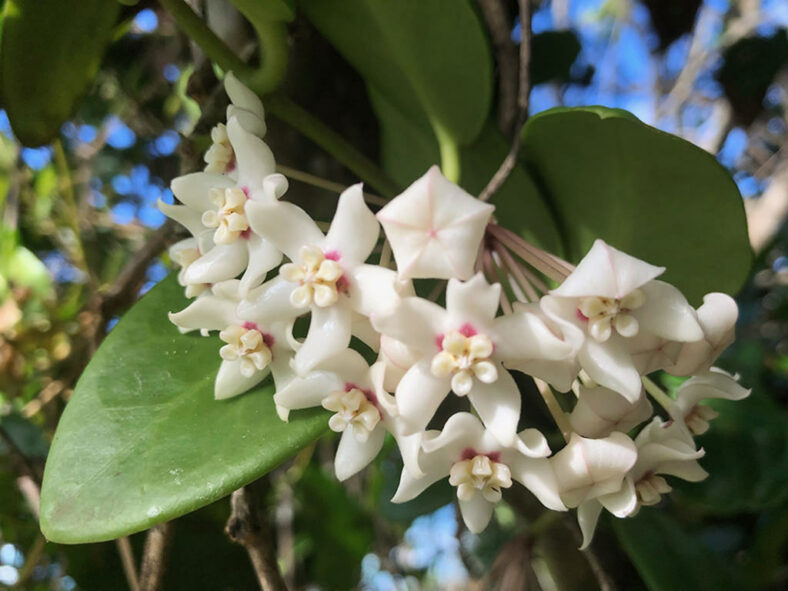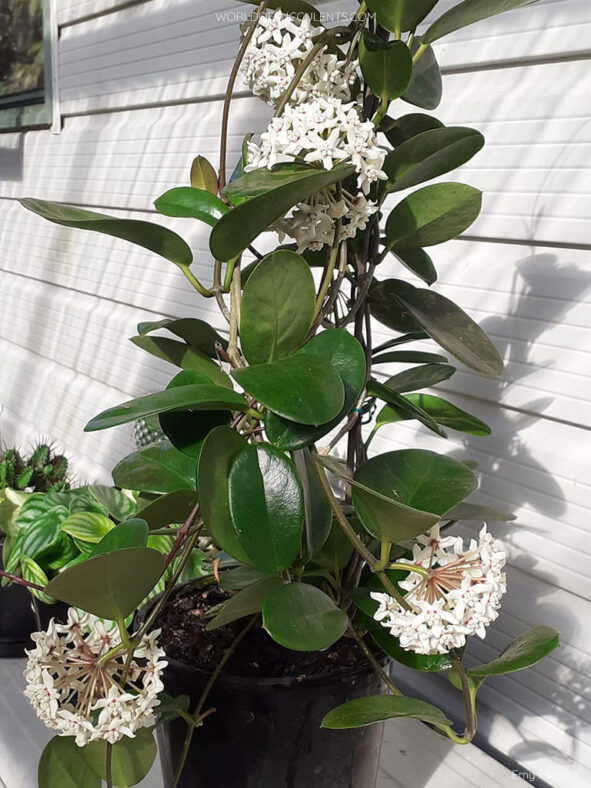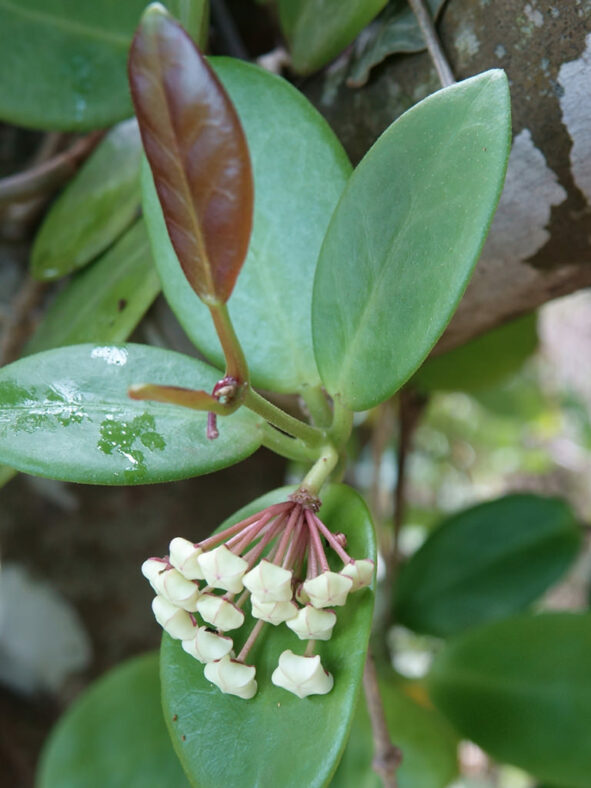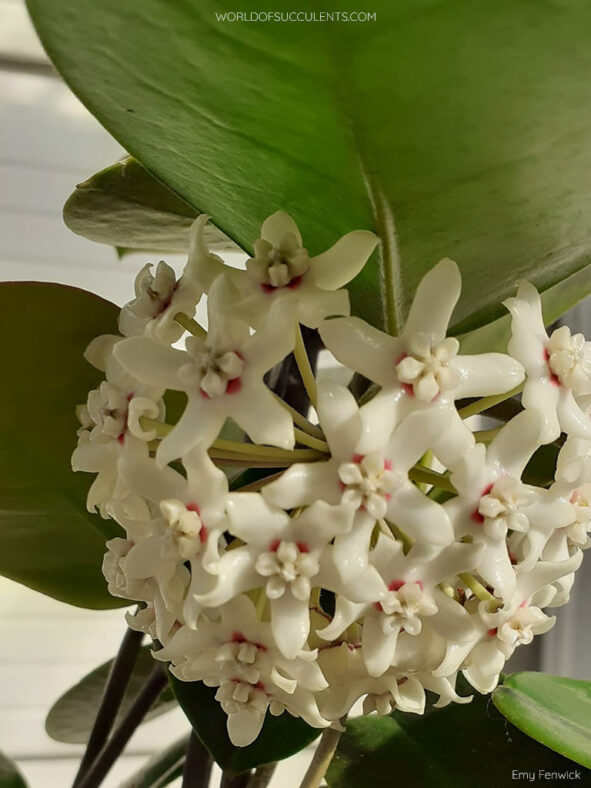Hoya australis is a popular garden and houseplant in Australia. It is often grown in containers and trained to grow on trellises, verandahs, and fences. With proper care, this plant can bring a touch of the outdoors into any indoor space when basking in direct sunlight.
Scientific Name
Hoya australis R.Br. ex J.Traill
Common Name(s)
Common Waxflower, Waxvine
Synonym(s)
Hoya australis subsp. australis
Scientific Classification
Family: Apocynaceae
Subfamily: Asclepiadoideae
Tribe: Marsdenieae
Genus: Hoya
Etymology
The specific epithet "australis" (pronounced "aw-STRAL-iss") means "Australian" and refers to the origin of this species.
Origin
Hoya australis is native to Australia and parts of Southeast Asia. It grows on rainforest margins and rocky areas.
Description
Hoya australis is a climbing plant with slender stems that bear shiny, succulent leaves. The stems can grow up to 33 feet (10 m) long. The leaves are elliptical or ovate and can measure up to 2.4 inches (6 cm) long and 2 inches (5 cm) wide. In sunnier positions, the leaves are yellowish-green, while in shadier positions, they are dark green.
Flowering may occur at any time of year, but Hoya australis usually blooms from late spring to fall. The flowers have a strong, sweet scent and appear in clusters of up to 40, each on a long stalk. They can reach a diameter of 1 inch (2.5 cm) and last up to 7 days. The corolla lobes are white, minutely hairy, and with red markings near the base.

How to Grow and Care for Hoya australis
Light: This plant prefers bright, indirect sunlight indoors. Although it can tolerate lower light levels, it may become weak and leggy if the light is too low, producing fewer leaves and flowers.
Soil: Well-draining soil that provides excellent aeration and does not hold too much water is most important for growing a healthy plant.
Temperature: Hoya australis thrives in hot and humid climates, so keep it away from drafty windows and doorways during the colder months. It grows best in USDA Plant Hardiness Zones 11a to 11b, with average minimum winter temperatures ranging from 40 to 50 °F (4.4 to 10 °C).
Watering: This plant is sensitive to overwatering. Soak the soil thoroughly during the spring and summer, but allow it to dry out before watering again. Otherwise, you will increase the risk of root rot, and your plant will not be happy. It is relatively dormant during the fall and winter and needs only moderate watering.
Fertilizing: While Hoya australis is not a particularly heavy feeder, it can benefit from high-potassium fertilizer diluted to half strength every two weeks during the growing season.
Repotting: As an epiphyte, this plant has shallow root systems and does need a deep container. It also does not require frequent repotting. It prefers to be slightly rootbound, so repot it in spring only if it outgrows its container.
Propagation: Although layering is the easiest way to propagate Hoya australis, using stem cuttings is the most popular method. Using leaf cuttings can be more challenging, while starting it from seeds is the simplest but most time-consuming method. For best results, take cuttings only when the plant is actively growing, and sow the seeds in spring and summer.
Learn more at How to Grow and Care for Hoya.
Toxicity of Hoya australis
Hoya australis is considered non-toxic, so having it around kids and pets is safe.
Links
- Back to genus Hoya
- Succupedia: Browse succulents by Scientific Name, Common Name, Genus, Family, USDA Hardiness Zone, Origin, or cacti by Genus
Photo Gallery
Click on a photo to see a larger version.


